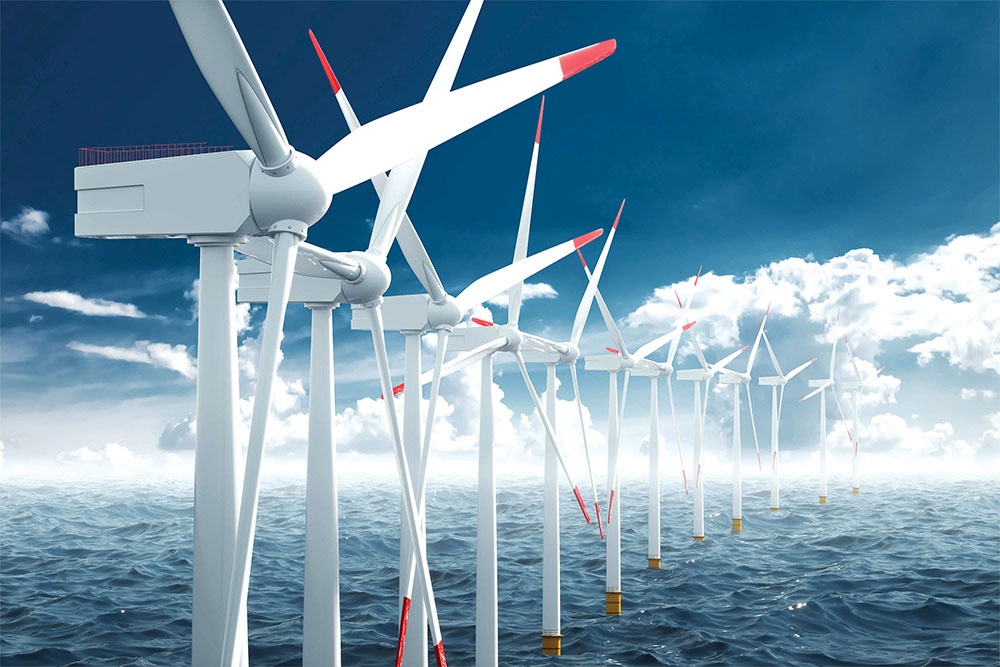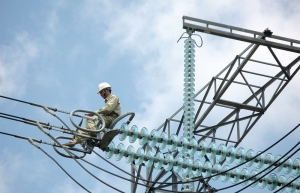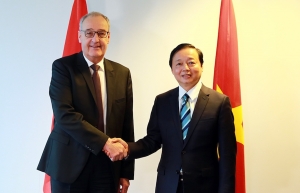Assessing the dual features of nation’s energy plan and PDP8
The Ministry of Industry and Trade is conducting consultations about the draft National Energy Master Plan (NEMP) for this decade, with a vision for 2050. What are your thoughts on the status of this plan?
The well-drafted NEMP draft incorporates several elements and demonstrates that it has reviewed international publications and learned from earlier planning efforts.
However, this plan does not clarify the connection between the NEMP and PDP8, nor the functions of the three subsectors of electricity, coal, and oil and gas.
This plan forecasts using a mix of top-down and bottom-up methodologies, which is a typical strategy but would need trustworthy data; without such data, the outcomes of the forecast would be erroneous.
Local GDP growth figures are typically 1.5-2 times greater than the numbers produced by the General Statistics Office. Calculated bottom-up from the GDP’s aggregate elasticity coefficient, the resultant price elasticity is similarly not particularly positive.
 |
| Assessing the dual features of nation’s energy plan and PDP8, Source: Shutterstock |
Are you referring to the discrepancy between present projections and future performance?
Electricity and energy demand forecasting is a crucial phase in the creation of any strategy. If the approach is flawed, and particularly if the data are insufficient and unreliable, the results of the demand prediction will surely be inaccurate.
In earlier plans, it has been seen that the outcomes are all excessive, influencing the building of the power source and the power grid. They will be costly, and it will be tough to assure progress, and even the regulations and measurements are biased and erroneous.
Vietnam’s energy infrastructure is in its infancy and is uneven and unreliable. Forecasting and planning, on the other hand, are insufficient because they lack content of computation, are difficult to apply, or do not account for progress.
Can you elucidate further?
I discovered that the innovation of the draft PDP8 was not in accordance with the law on planning and electricity, regardless of the fact that the necessity for an electricity master plan is to be based on the Vietnamese socioeconomic development strategy and the national primary energy stability.
The draft PDP8 states that the electricity demand will increase at a rate of over 8 per cent per year between 2021 and 2030 and about 6-5 per cent per year between 2031 and 2045; the electricity produced in 2030 and 2045 will be 537 and 959 billion kWh, respectively; the respective elasticity coefficients are 1.15 and 0.58; and the power source capacity will be 138,000-300,000MW.
These figures are attractive, but reaching them is difficult. This decade will need around $13.3 billion per year, while the period from 2031 to 2045 will require approximately $12.5 billion per year. These investments are not modest, with a net investment of approximately 26 to 28 per cent.
In the PDP8 draft, planners predict a high level of consumption, up to 959 billion kWh. They should recognise that the decline in the electrical elasticity of the GDP is merely one of many factors that are more significant than the decrease in electrical intensity.
This indicator in Vietnam is $1 for a kWh, which is two to three times more than in developed nations. The projection must take into account the importance of utilising energy effectively, inexpensively, and cleanly as opposed to growing the source.
If approved, do these master plans, in your opinion, meet the energy transition requirements to achieve zero emissions by 2050?
This is hard to pinpoint. In the renewable energy component of the present plans, wind energy needs fundamental research; solar energy lacks regional usage summaries and regulations; and biomass energy lacks survey and planning.
Wind and solar energy investment costs are reducing significantly in Vietnam but are still more expensive than conventional sources. Prior to 2010, the investment rate for wind power in Vietnam ranged from $3,500 to $4,000 per kWh, which corresponded to an electricity price of 15-17 cents per kWh. However, by 2015–2016, the investment rate dropped to $2,000–$2,500 per kilowatt, and the electricity price dropped to 9-10 cents per kWh. It is anticipated that by 2025, the investment rate for wind power will decrease to $1,500 per kW and the price of energy will drop to 7 cents per kWh. Due to the properties of this kind of energy, the operating capacity is quite low. The technique of estimating the source, the grid to maintain stability, the reserve capacity, the storage of power, and the related investments remain unclear. The government must learn from the PDP7’s experience, which has shown that adopting more than one programme at a time is inappropriate and must be amended.
 | Rising energy costs to require roadmap for businesses’ timely adjustment of strategies The Vietnamese industrial sector may need to reevaluate in order to minimise the effect of rising power costs. |
 | Vietnam fosters shift to renewable energy With an emphasis on sustainable power, the Vietnamese government has enacted several procedures and regulations to foster an equitable energy transition. |
 | $15.5 billion in financing for green energy from Just Energy Transition Partnership 2023 could be an interesting year for Vietnam’s energy sector, as $15.5 billion of financing is set to be mobilised for Vietnam’s green energy transition through a recent energy partnership. |
 | How to sprint ahead in 2023’s worldwide energy priorities Private industry and governments must team up to make progress on two goals in parallel – growing access to electricity while decarbonising the energy, transportation, and industrial sectors. Roger Martella, chief sustainability officer at GE, explains how this will be possible. |
What the stars mean:
★ Poor ★ ★ Promising ★★★ Good ★★★★ Very good ★★★★★ Exceptional
Related Contents
Latest News
More News
- Driving double-digit growth through green and circular transformation in Vietnam (December 17, 2025 | 09:00)
- Standard Chartered and ACCA deepen collaboration to develop Vietnam’s talent for a sustainable future (December 15, 2025 | 18:18)
- Schaeffler reports strong early output from Dong Nai solar project (December 12, 2025 | 15:16)
- Forestry conference highlights biodiversity and sustainability goals (December 09, 2025 | 13:35)
- Home Credit honoured among top 10 sustainable companies in trade and services (December 09, 2025 | 12:18)
- SCG and seven member companies honoured in Top 100 Sustainable Businesses 2025 (December 08, 2025 | 09:00)
- Nestlé Vietnam pioneers sustainable development and promotes business connections (December 06, 2025 | 12:09)
- CSI 2025 highlights rise of Vietnam’s green champions (December 06, 2025 | 09:00)
- Acecook Vietnam named among top 100 sustainable businesses (December 06, 2025 | 08:00)
- Vietnam’s forest carbon credits draw global interest (December 05, 2025 | 17:41)

 Tag:
Tag:





















 Mobile Version
Mobile Version